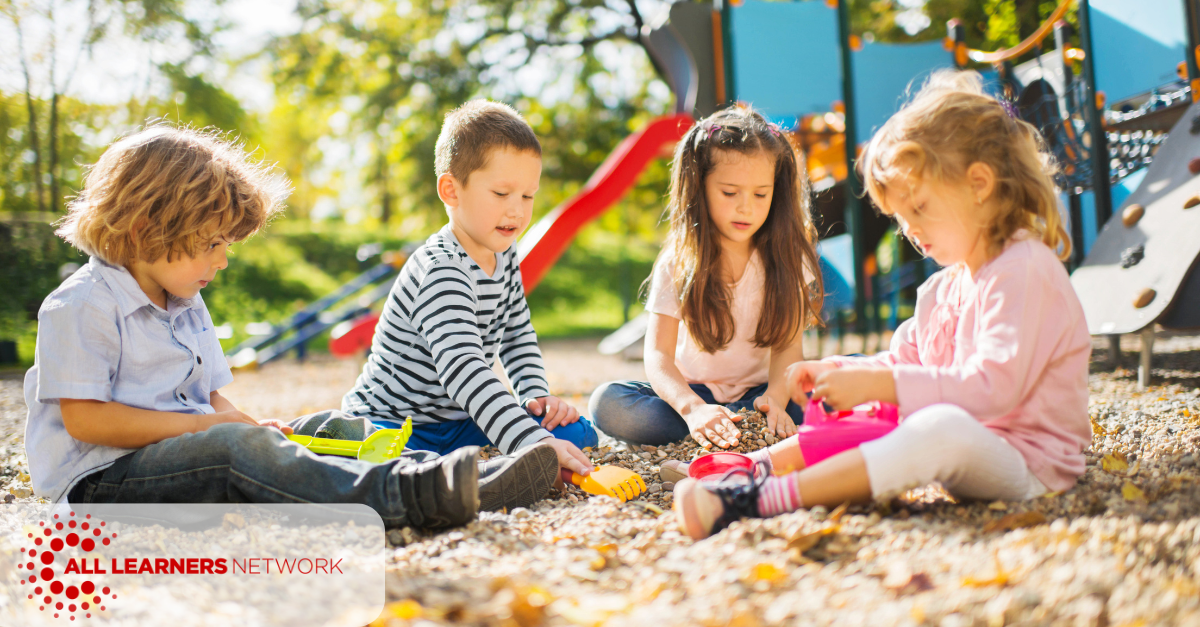
Counting Collections Are All Around Us
Published: September 6, 2024
We all know the power of Counting Collections. We also know that counting is very complex with so many foundational concepts (e.g., number word sequences, cardinality, hierarchical inclusion, relative magnitude, etc) being explored and developed by students, which necessitates multiple opportunities to count. Counting Collections answers that need. Counting is at the heart of all mathematics; it is fundamental! And observing young children in action is a powerful way to capture their understanding in authentic settings.
When I think about Counting Collections, I often think back to a conversation I had with my then-3 year old granddaughter as we drove home from a day of running errands. As I was contemplating what we would have for dinner, she piped up from her car seat, “Three more stop signs and we’re home.” I asked her how she knew and she simply said “I count them everyday.” I asked her if she counted other things every day. She said “yes” and that was the end of the conversation for her but I was curious.I wanted to know about the things she thought were important enough to quantify. What was she counting and why?
As educators of young children, we all understand that counting experiences are essential for all children to engage with. We create collections of objects to count: unifix cubes, teddy bears, blocks, pencils, erasers, etc. While these are all fine opportunities to practice counting, connecting number words to quantities of objects, keeping track, organizing, and cardinality, etc., they are often determined by teacher choices. Based on my experience with my granddaughter, I wanted to find out from students what they thought was important enough to quantify. I wanted to acknowledge and respect the natural counting experiences that mattered to young children. Most of all I wanted to notice - become more aware - when they occurred and elevate the importance of those experiences in my classroom environment also.
I spent some time just watching preK and Kindergarten children as they played. The playground or free/explore times were a cornucopia for noticing counting experiences. First and foremost, young children were quantifying their world daily and in multiple ways, all without adult direction. What a joy it was to watch them! Here are three of my most frequent observations, which now inform how I plan for counting collections and initiate conversations:
1. Real is always better.Rocks and stones, toys, blocks, etc. are some of the most important objects for students. Young children like to collect things. So many of the children I observed collected rocks and stones when they were outside. Sometimes they built with them, or lined them up or just created unique designs. Leaves were another collectable item. Children created bouquets of leaves they found on the ground or were able to reach from low hanging branches. They intuitively brought math into those activities.
When I had a chance to chat with students about their collections, we were able to stay grounded in the context of their personal collections. My attention to their collections acknowledged how interesting and important they were. These young children had no problem answering all of my “How many?” “Who has more?” questions by jumping right into their collections. I was able to ask the ever versatile “What if…?” questions, too. Here are a few that always worked for engaging young children in math conversations:
What if I gave you one more stone/rock? How many would you have then?
What if you gave one stone/rock to your friend? How many would you have then?
What if you made a different design with the same rocks? Would you still have ___?
What if something happened to your design, how would you know if you had all of the rocks (leaves) that you started with?
The fact that the students decided what was fun or important to collect kept them engaged in the act of counting longer.
2. Comparing is a natural part of the process.As you can imagine, one of the outcomes of counting a collection of objects is to see who has more or who’s collection is longer/taller/bigger. There is a component of counting collections that naturally produces the wonder of “who has more?” and “let’s find out”. An authentic example of this type of investigation occurred when one pair of students were in the block center creating roads out of the blocks. One student said “My road is longer than yours.” The other student looked at the two roads and was doing some thinking (while his finger was pointing to his block road, counting) and said “yeah, but I have more blocks than you.”
Wow! This led to a conversation that engaged these students in further conversations and discovery: How many blocks do you have? How many more blocks do you have than your friend? How did you figure that out? Why does he have a longer road than you, if you have more blocks? If you wanted to have the same number of blocks, what would you do?
Staying grounded in their own collections provided fodder for so much math discourse. I learned so much about their mathematical understanding through our informal chats (Some might even label these “Student Interviews”.).This was Formative Assessment at its finest; timely evidence about students’ counting skills.
3. Variety and purpose matter to children when they are counting.This is not a new observation.We all know that many students can lose interest if they are asked to count the same set of objects multiple times, unless it’s their choice. Keeping them engaged is typically not a problem when it’s something they are interested in counting. However, we also need to structure counting opportunities because we have a responsibility to build upon and extend their understanding. Giving students a reason for counting can help in those situations. Requests for help such as “I need to know how many markers we have so I can share some with Mrs. X.” “I’m wondering how many pencils we have because I have to order more.” often engage students in counting objects they otherwise would not have thought about. These tasks underscore that everything and anything can be counted. We also invite them to be an integral part of the solution process. Their counting skills matter.
As this new school year kicks off, we should all be thinking about ways to embed counting collection opportunities routinely and frequently in learning experiences for our students. Sometimes we need to structure those opportunities by choosing for students what to count. And, I would advocate that we should also be on the lookout for where counting occurs naturally and follow our students’ interests. They often lead to discovering how mathematically curious our students are and uncovering students’ strengths around counting.
Counting Collections are all around us. Where are yours?
Click here for the printable version.
What Now?
- Read our blog on Finding Math Outside to learn more about how counting collections are all around us.
- Check out our Games Before Kindergarten booklet for more ways to encourage early positive math experiences.
- Bring All Learners Network (ALN) into your school or district for embedded professional development.

All Learners Network is committed to a new type of math instruction. We focus on supporting pedagogy so that all students can access quality math instruction. We do this through our online platform, free resources, events, and embedded professional development. Learn more about how we work with schools and districts here.




